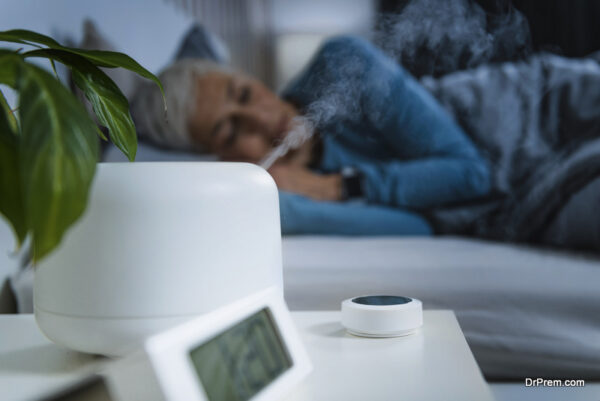Nowadays, most people spend their time in the comfort of their homes due to the pandemic’s consistent lockdowns and restrictions. But is it comforting to stay inside your homes in terms of air quality?
You may have noticed that the air outside is much better and cleaner. It’s because of reduced human and economic activities, such as driving and manufacturing, across the world. Perhaps it’s time to open those windows and let the fresh air come in.
However, the economy is gradually returning to normal, and most trucks are getting started. So, is it time to close those windows again? This depends on your preference, but according to the experts, it would be better to leave them open for some time to let the air properly circulate.
Furthermore, experts say that indoor air quality is around two to three times more polluted than the air outside your home. So, it would be best to consider investing in equipment, such as your home’s heating and cooling system, humidifiers, and purifiers to ensure good air circulation and quality.
What Causes Poor Air Quality?

· Outdoor Pollution
The most common air pollutants come from the outside, especially combustion systems from vehicles, solid fuel sources, coal-burning to produce power, and other manufacturing industries. Other sources may include vegetation emissions, wildfires, or dust storms.
· Indoor Pollutants
The most common indoor pollutant is the combustion from your gas stove, which can increase your home’s amount of PM count. Other combustion sources are candles, cigarette smoke, unvented heaters like kerosene.
Furthermore, studies show that gas stoves may emit dangerous gases, such as CO (carbon monoxide), NO2 (nitrogen dioxide), and formaldehyde.
· Radon And Volatile Compounds
These pollutants are hazardous and may result in adverse long-term medical conditions, such as respiratory problems or lung cancer.
Radon is an odorless and colorless radioactive gas from soils, rocks, and groundwater. Radon may seep into your homes through small cracks from pipelines, walls, and floors, especially in basement areas.
In addition, volatile organic compounds (VOCs) are gases released from the air due to some products, such as construction materials and chemicals, printers and copiers, and aerosols.
How To Improve Indoor Air Quality?

· Using Dehumidifiers And Humidifiers
The primary purpose of dehumidifiers is to reduce and remove excess moisture in the air, preventing the growth of molds and dust mites. Other benefits include reducing mildew spores and eliminating cold feelings, resulting in pungent odors.
On the other hand, humidifiers increase the moisture content in the air if it’s too low. By maintaining adequate moisture levels, allergens and allergic reactions will be minimized because of the reduced microbial count present in the air.
A balanced humidity may also benefit your wooden furniture by preventing it from cracking and warping.
· Monitoring Your Thermostats
By using thermostats, you will be able to run your heating and cooling systems when you need them. This will help you save more energy and reduce pollution due to microorganisms found in your system.
· Installing Home Ventilation System
The primary benefits of home ventilators include removing stale air and bringing fresh outdoor air. Furthermore, if ventilators are properly maintained and controlled, it may reduce your use of heating and cooling systems by providing free cooling and heating.
· Removing Combustion Sources
Gas stoves are part of everyone’s daily lives. However, since they release gas pollutants, it would be best to use vents, such as kitchen hoods. Using vents may help you reduce and dilute pollutants in the air. If you don’t have cooking vents, you may open your windows and let the air from the outside circulate inside your home.
Furthermore, you may reduce combustion pollutants by reducing or eliminating smoking, preventing various fatal diseases, such as cancer.
· Using Indoor Plants
Indoor plants can significantly improve indoor air quality by absorbing gases and other pollutants and releasing fresh air. However, beware that some plants may be poisonous for your children and pets. So, make sure that your plants are safe for everyone.
· Using Air Purifiers
Air purifiers are important to maintain clean air for your home. These may come in different forms, such as using UV light or highly efficient and effective air filters. Also, by using air filters, you’ll notice a significant reduction of microorganisms, pet dander, and pollen. Furthermore, it will help your ventilation, heating, and cooling systems provide much cleaner air.
Final Words
Maintaining clean and safe air is essential for you and your family. That’s why you have to be aware of the different kinds of pollutants that may reside in your home. These include outdoor pollutants from industrial and human activities, radioactive and volatile compounds, and indoor combustion sources.
Furthermore, knowing pollutants is not enough. You also have to learn how to maintain clean air by reducing tobacco use, ensuring air circulation when cooking, using purifiers and humidifiers, and more. So, check your home’s indoor air quality and see if you need to use some of the tips mentioned above.
Article Submitted By Community Writer




